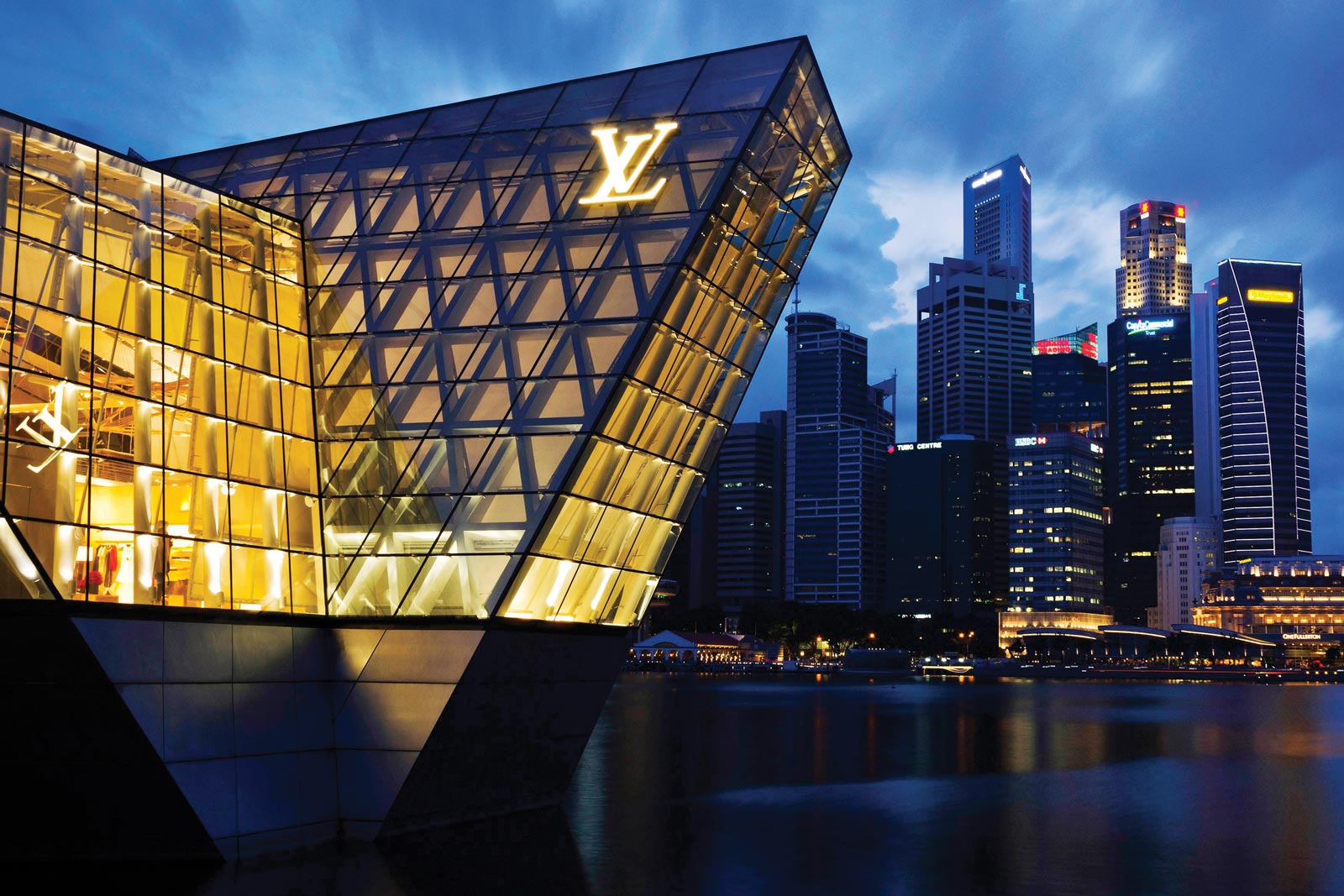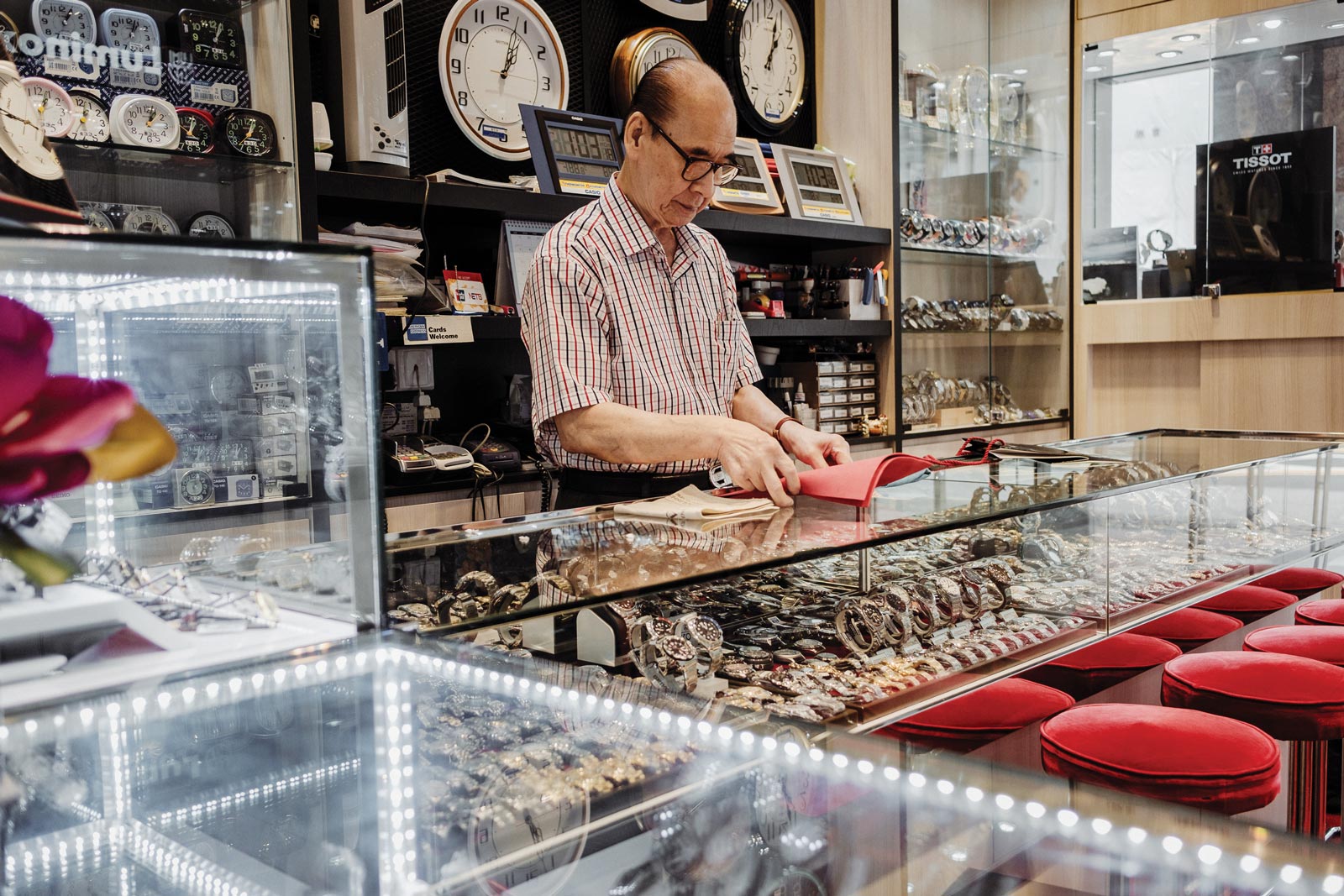EDITOR’S NOTE
While originally published in March 2017, many of the issues raised in this piece continue to impact Singapore’s retail outlets today – an industry predicted to remain weak in 2020. As of October last year, the retail industry was mired in a decline lasting nine consecutive months, as part of a wider slump lasting at least three years that has seen major brands such as Gap, Banana Republic and Jack Wills exit the market. More broadly, growth in Singapore’s retail and food and beverage industries has struggled to keep pace since the 2009 financial crisis, showing an annual rate of below 2% despite an average gross domestic product (GDP) and household income growth rate of over 4% during the same period.
Struggling for sales and increasingly threatened by the growth of e-commerce, Singapore’s malls are turning to non-retail, experiential methods to increase footfall. One such example is the city-state’s Funan Mall, which reopened after three years in June 2019 and was refurbished to include an urban farm, rock-climbing facilities, and an indoor cycling track.
As a small, tightly packed city-state, Singapore lacks the mile-long beaches, vast jungles and stunning natural landscapes that attract tourists to its Southeast Asian neighbours. Instead, the island sells itself as a haven for food and shopping – an easy gateway to Asia, where one can sample a wide variety of cuisine and make purchases in the comfort of air-conditioned environments, all while speaking English.
But hard times have hit Singapore’s shiny shopping centres. According to figures released by the Urban Redevelopment Authority in October 2016, the island-wide vacancy rate of retail units had risen to 8.4% by the third quarter of last year [2016]. Statistics provided by the authority showed that the vacancy rate had generally been on the increase since the end of 2013, but business news website Bloomberg reported that, based on its own data, vacancies are now at their highest point for a decade.
Observers have pointed to an economic slowdown as a major contributing factor to this trend. “The economy is down, so a lot of people are earning through office space rather than using a shophouse as a retailer,” said Janice Leong, a real estate agent who deals in commercial property.

A lot of people have now changed to online sales … They have some retail shops at certain malls, then they also post their things online. That’s a way to shift your profit, to not let the mall get extra profit from your side
This rocketing vacancy rate is palpable on the ground. It’s not uncommon to see colourful hoardings in malls, and although some of them are temporarily masking ongoing renovation work, according to real estate experts they are more often than not just window-dressing for empty units.
Peter San runs Excellent Watch, a modest, old-school shop near Singapore’s civic centre, across the road from the historic St. Andrew’s Cathedral. It’s the latest location for the business he started in 1970.
“At that time, rent was very cheap,” he told Southeast Asia Globe. “It was a few hundred [dollars] only. And then it went up.”
These days, finding a space that only costs a few hundred dollars is about as likely as stumbling upon a unicorn. Across the street from San’s shop is a large unit with “FOR RENT” signs plastered across its glass windows. San and his daughter both said the asking price is about $14,000 (SGD20,000) a month. It’s been sitting vacant for months.
“Here and there, [the malls] will take more money for their profits. A lot of people have now changed to online [sales] … They have some retail shops at certain malls, then they also post their things online. That’s a way to shift your profit, to not let the mall get extra profit from your side,” Leong said.
“You work so hard, and it all goes to rent,” San said with a resigned shrug of his shoulders. None of the small business owners he knows in Singapore are making much profit. “You don’t think about making money … just [about] break[ing] even.”
Shop owners such as San aren’t the only ones who are struggling for survival. Despite the island’s reputation as a food lover’s paradise, the local food and beverage (F&B) industry also has its fair share of challenges.

In October last year [2016], restaurateur Keith McNally penned an opinion piece for the New York Times about the difference between opening a restaurant in Manhattan in the 1980s and opening one today.
“One crucial change that’s hurt restaurants in Manhattan is the drastic rise in rents. During my first 30 years as a restaurateur, I expected to pay around 7% of my income on rent. Today, it’s at least 14%,” he wrote.
It was a figure intended to shock – to drive home the point of how ludicrously tough it has become to run a restaurant in New York. The reaction among Singapore’s hospitality operators, however, went more along the lines of an eye-roll and a ‘we should be so lucky’.
“It’s at the point where most F&B outlets [in Singapore] are looking at rent being 25% to 30% of their revenue. With staff costs and food costs, that leaves you with sliver-thin margins,” explained one of the country’s most successful chefs, Shen Tan.
Tan kicked off her career in food when she opened a hawker stall selling nasi lemak, a fragrant coconut rice dish, and went on to open The Wok & Barrel, a cosy little eatery in a hip neighbourhood of renovated shophouses. She had plans to further expand her repertoire of ‘Mod Sin’ – modern Singaporean cuisine – dishes but closed the restaurant in 2013. Tan later returned with Ujong restaurant at the opulent Raffles Hotel in 2014, but left that project too before the year was out.
As someone who has experienced both the hawker and high-end restaurant industries, Tan knows better than anyone that the maths often doesn’t add up.

“From an ecosystem point of view, how do you survive? How do you put out food at SGD3 [$2.10], or SGD5 [$3.50], or whatever, and pay rent and your utilities? What’s left at the end of the day? It just gets to a point where you start to question why you’re doing it,” she said.
As businesses such as Tan’s continue to pull out – or go under – the glut in retail space is only set to grow. According to the Urban Redevelopment Authority, 182,000 square-metres of retail space is set to be constructed in 2017, with a staggering 234,000 square-metres expected for 2018.
Yet some see a silver lining, predicting the extra supply is likely to place more pressure on the market to regulate its prices. “The price must now be reasonable,” Leong said, pointing out that rents for retail spaces are still fairly high, relative to office space. “The owner must be reasonable, because currently the market is quite bad, so if they want to lease out their unit they should try to reduce a bit in order not to let the store be empty.”
With small local businesses finding it difficult to survive, the likeliest tenants become obvious. “Only the big groups will go in,” San said of the promised new malls.
“It’s just a franchise thing … cookie cutter everywhere,” Tan added. “I would never open in a mall, just because I know the quality of the food that is being offered in a mall is not going to be reflective of my standards.”
Other F&B operators echo her unwillingness to compromise on quality. On the second to last day of 2016, kki – pronounced “keki”, after the Japanese word for “cake” – was packed with customers and selling out of its sweet edibles. It closed early this year, after seven years of operations.

“We’re taking a break, and then we’ll see. We’re cutting our losses, because the next six months will be tough,” said Delphine Liau, who founded the store with her husband. She did not expect the holidays in the first half of the year – such as Chinese New Year or Valentine’s Day – to bring in extra business.
Nobody comes to Orchard any more. They all stay in [the heartlands]. After all, all the malls there have the same shops: Uniqlo, H&M … but how long can this last?
For them, it was not only about rental costs, but also the willingness of Singaporeans to pay. “Singaporeans travel, but we don’t grasp the idea of craftsmanship,” she said. While many businesses in places such as Japan tend to focus on quality, Singaporeans still tend to go for price and convenience. When local business owners try to outdo each other, overall quality suffers.
“Society has progressed, and we’re now being exposed to a lot of things, but mentality-wise, we’re still very stuck,” Liau added. “[Local businesses] often just churn … they are too much in a hurry to open up chain stores.”
This tendency toward franchising has led to malls cannibalising one another’s businesses. From the consumer’s point of view, there is little point travelling to a particular mall when its offerings are the same as any other.
“Nobody comes to Orchard any more,” Liau said of Singapore’s main shopping belt. “They all stay in the heartlands [Singapore’s outer suburbs]. After all, all the malls there have the same shops: Uniqlo, H&M … but how long can this last?”



